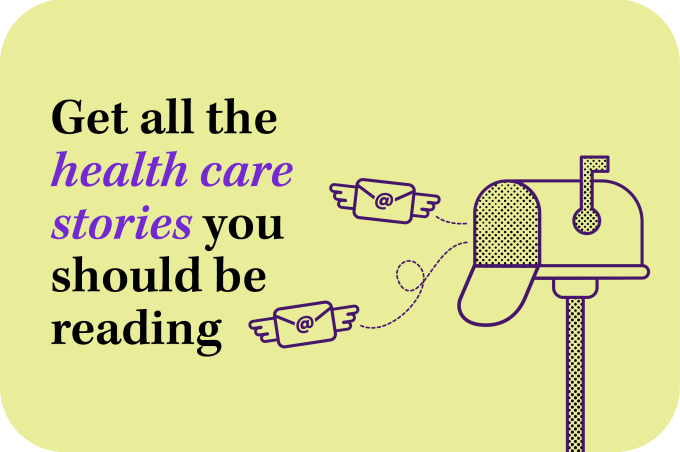As a family physician for nearly three decades before taking on his current role, Reggie Lyell, MD, knows firsthand what a burden the inbox has become for physicians.
“We are trying to let the physicians have a say,” said Dr. Lyell, a physician champion for the EHR at Baptist Health. “We’re trying to lessen physician burnout, but by doing so, we want them to have a say on which patients they take care of and when, and not so much that patients can just dump all of their information and requests on texting.”
Baptist Health is a member of the AMA Health System Program that provides enterprise solutions to equip leadership, physicians and care teams with resources to help drive the future of medicine.
Recently, after covering seven in-baskets for a week while teams were on vacation, Dr. Lyell had to manage 40 messages per inbox per day. And that was “just patient request calls,” he said. These are not refill requests. These are not results. These are patients initiating a text or call saying they need to talk about something.”
Of those messages, about seven “per day needed an office visit within two weeks, but 3.5 of those messages per day needed a visit within three days,” Dr. Lyell said.
With this data in hand, Dr. Lyell and a highly involved team have worked with a pilot program at Baptist Health to manage the inboxes of physicians and other health professionals so that when they come back to work they can focus on patients, not clicks.
Lending a hand when needed
Taking vacations and paid time off (PTO) are key restorative activities for physicians and other health professionals. But the problem is too many physicians work under circumstances in which PTO is really “pretend time off,” and they face too many barriers to taking that much-needed vacation. And even while they are on vacation, many doctors are spending 30 minutes or more catching up on overloaded EHR inboxes and work email, which contributes to—and worsens—physician burnout, according to an exclusive AMA survey.
This is where Baptist Health Medical Group’s pilot program—called Virtual Acute and Subacute Encounter Resource (VASER)—steps in to help. And how it works is “the VASER team takes care of either a telephone encounter, a virtual visit encounter, an inbox counter or a patient request,” he explained.
The VASER team consists of a physician, nurse practitioner or nonphysician provider. Each member helps to offload some of the messages received. One member of the team that Dr. Lyell is hoping to add is a pharmacist, who could further help with refill requests.
“We have a lot of pharmacists that we can pull in to help us with our medication-refill request, so we’re working on a protocol for that,” he said. “Also, we’re looking at case management for our social resources for patients who can’t get to this facility or this appointment. We would have a case-management consult that could assist on our VASER team.”
Whether a physician is going on vacation or simply has to leave early for other obligations, the messages will all be routed through the VASER team. This is to ensure physicians and other team members come back to zero inbox.
“We have some support behind the idea that if this costs us a little bit, it can also save us in the long run because we have lost three physicians since January of this year and all of them attributed inbox burnout as their reason for leaving and going someplace else,” Dr. Lyell said.
As the leader in physician well-being, the AMA is reducing physician burnout by removing administrative burdens and providing real-world solutions to help doctors rediscover the Joy in Medicine™.
Group meetings guide discussion
These ideas don’t come out of the blue, though. Dr. Lyell and members of a group that is operationally led and IT supported come together to determine solutions for addressing EHR inbox burden at Baptist Health. The group meets every two weeks and includes project managers from different departments, an operations manager, a member from IT and three physicians.
“We kept it small because we want to be able to make decisions and recommendations quickly,” Dr. Lyell said, noting that when an idea comes in, “we make recommendations and brainstorm and decide on what we need to do. We get a consensus and then we send it to the people to make the official decision.”
One suggestion was to shorten the character limits on the messages that patients send. After research and learning what has happened in other “organizations that have done that is patients just send three or four messages,” Dr. Lyell explained. “They reach the limit and think they have to keep going. Now from a physician standpoint, I have three message chains going … and you have to respond in three different places.”
Another idea floating around has been charging for in-basket messaging, but early experience from trials at other health care organizations shows a dramatic negative impact on patient satisfaction, and only a negligible cut in message volume, he said.
Allowing for control of their day
The purpose of the work to cut doctors’ inbox burdens is not to create time for higher patient volume, Dr. Lyell noted. Rather, the aim is “to prevent physician burnout, to help with the balance of quality of life and the work-life balance.”
“If you’re really going to support your physicians and recruit primary care, you’ve got to show that family is important, that your home life is important and that we’re going to support you in that. The purpose is to control the amount of work you get done during the day,” he said.
“Our organizations need to be able to recognize that this is not a money-generator—it’s a burnout-preventer.”
Dr. Lyell recently shared about how after a near-death experience, he took on the task of reducing the in-basket burden at Baptist Health on a recent episode of “AMA Update.”




